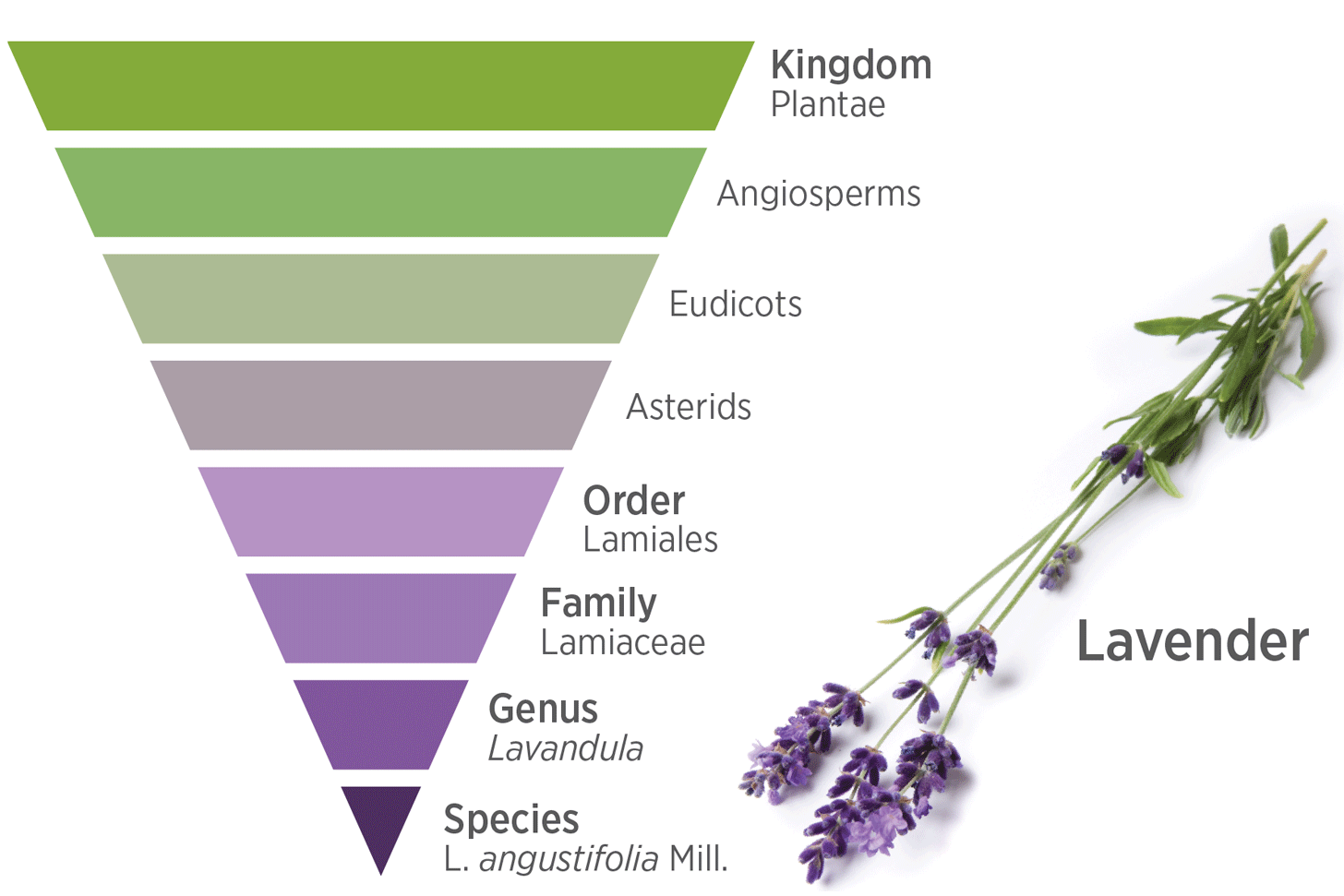Origin: a Latin derivative
meaning "Gift of the Earth."
Part 3: Growth, Reproduction, and Evolution—Taxonomy

Taxonomy is a man-made classification system that is used to group organisms in an ordered system to indicate natural relationships and especially evolutionary relationships. These classifications are based on observations and morphological distributions and an interpretative approach based on evolution or ancestral similarity deduced from development and geographical influence which reveals the natural relationships between species and families. The objective of a taxonomic classification system is to establish a universally accepted, usable inventory that allows both unambiguous identification and differentiation of plants throughout the world.
Each plant has been designated a scientific nomenclature (name) based on its location in the phylogenetic family tree. There are two names to pay close attention to when researching plants: the genus and species. The genus is a generic name for a group of closely related plants while the species is a more specific name. It can almost be thought of as a person’s last and first name. The genus (last name) identifies a family of closely related “siblings” whereas a species (first name) is specific and personal. When looking at a plant’s scientific name, the genus is always written first followed by the species and is usually written in italics. Species can also be subdivided into sub-species where differentiation is not strong enough to designate a new species. Using the above information, the taxonomic name for lavender is Lavandula angustifolia Mill. (Lavandula=genus, angustifolia=species and Mill.=the abbreviation for the botanist Philip Miller who named the plant).
When listing several plants with the same genus, the author may also abbreviate the genus by using just the first letter after writing it once. Let’s use different lavender species as an example. Lavandula angustifolia Mill (Lavender), L. x intermedia Emeric ex Loisel (Lavandin), L. Latilfolia Medik (Spike Lavender), L. stoechas L. subp. stoechas (Stoechas), and L. pedunculata (Mill.) Cav. (sometimes erroneously called French Lavender), are all species and the hybrid lavandin are included in the Lavandula genus. As can be seen, the taxonomic designation for lavandin is L. x intermedia Emeric ex Loisel, the "x" indicates that the plant is not a true species but a hybrid.
Common names for plants can be very misleading. For example there are more than 50 plants that are known as oregano or origanum. Consequently, when oregano is given as the plant source the actual true botanical origin which should include the genus name with the first letter capitalized, the species name in lower case letters and the name of abbreviation of the botanist who named the plant. The taxonomic origin of oregano which is distilled to produce Oregano oil is Origanum (genus) vulgare (species) L.(Linnaeus, the botanist who named it) subsp. hirtum (the subspecies of vulgare) (Link) Ietswaart (Link the botanist that differentiated the plant form the normal species vulgare, and Ietswaart who more recently designated the differentiated plant as a subspecies which he named hirtum. One further occasionally confusing designation is the cultivar. A cultivar is a selection of a particular species that is clonally reproduced. The designation is commonly used for garden and crop plants. For example some cultivars of lavender are 'Munstead', 'Ashdown Forest' and 'Hidcote', all of which originate from Lavandula angustifolia Mill.
Taxonomy allows for the correct identification of plants used to isolate essential oils. It is always important to pay close attention to the botanical name of the plant including making sure you are getting what you intend.





